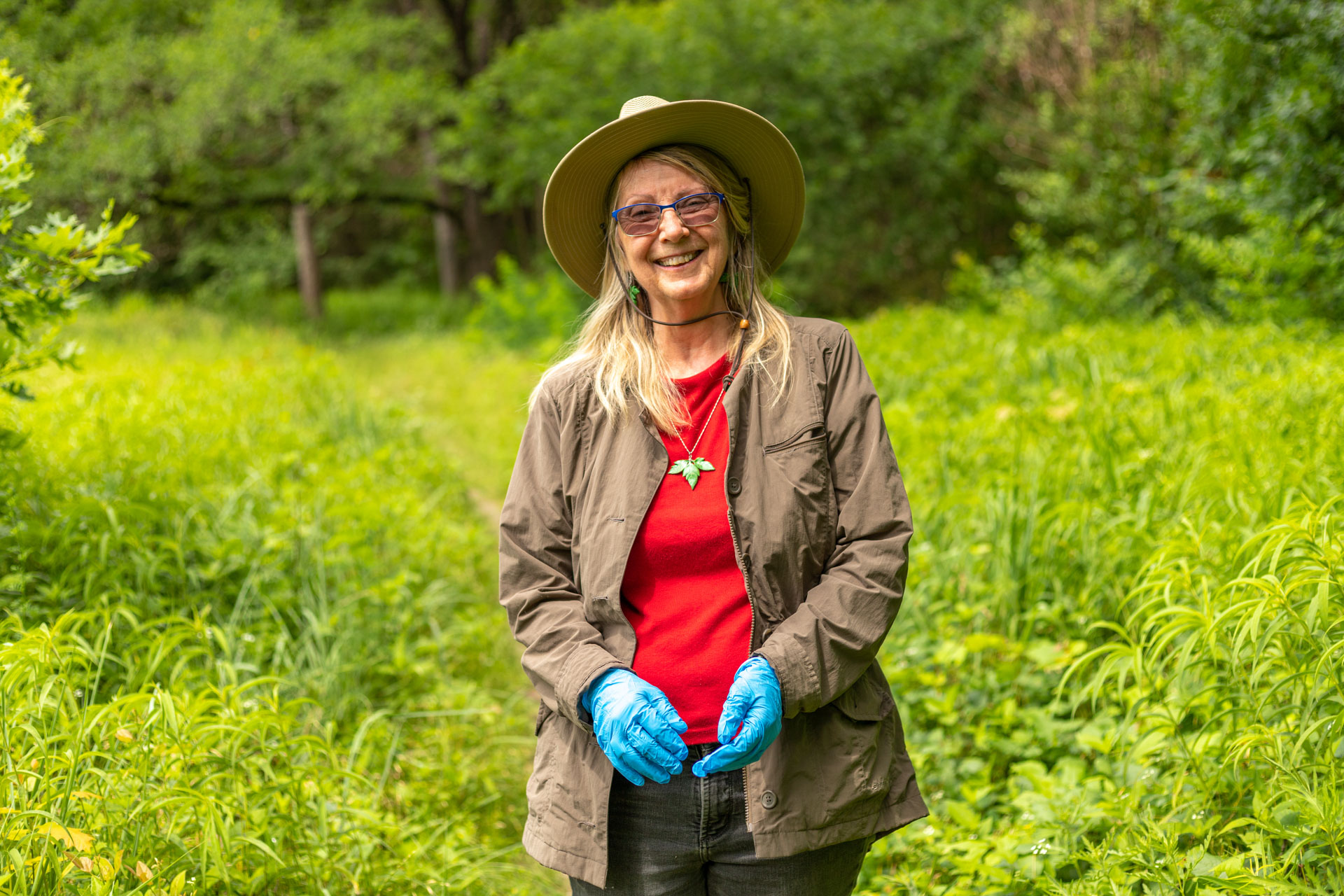
Photography by Jessica Turner.
Nature-loving East Dallas neighbor Amy Martin, now an expert on all things poison ivy, gladly and unabashedly shares her cautionary tale of a memorable rash. This one will make you squirm, especially if you’ve ever suffered through a poison ivy reaction.
“Aside from elbow rashes, butt crack is the worst,” she says.
While clearing a trail in the woods, she yanked on a bunch of briar vines, squatting down to get some traction. A shower of dead leaves rained down upon her, some of which were poison ivy, and some of which promptly found their way down a gap at the back of her pants.
“Went way down the crack. Horrible place to get a rash,” Martin says. “Good air flow is crucial for treating the rash. Ain’t happening back there. Lucky I work from home. Did not wear pants for two weeks. With my thin, pale skin, poison ivy considers my body an amusement park.”
One too many itchy rashes later, Martin made it her mission to learn as much as she could about the plant. After hours and hours of self study, interviews with experts and “reading every book published on poison ivy,” she wrote her own: Itchy Business, a handy guide to treating the rash, preventing exposure and eradicating the darn stuff in your yard.
In a nutshell, the best strategy is avoiding the notorious “leaves of three.” Know the enemy and anticipate where it grows.
“Anywhere there is shade, there is poison ivy, especially where soil stays moist, so creekbanks are full of it,” Martin says. “Look for it on the edges of forests and treelines where it can get a few hours of sunlight a day. Birds love the berries, so anywhere they perch, they poop poison ivy berries.”
Keep in mind that poison ivy is notoriously sneaky.
“Many trees have poison ivy vines growing up them, sometimes thin and hidden in the bark,” Martin says. “All firewood has poison ivy vines and inhaling that smoke will make you mighty sick. Poison ivy will grow out on a limb and dangle down to hit bicyclists and tall people going down the trail. Tall grass often has poison ivy mixed in, as do groundcovers like English ivy and Virginia creeper.”
But you can still enjoy nature. Just be smart about it.
“Prevention is best,” she says. “Wear a long-sleeve overshirt in poison ivy territory. Fisherman’s shirts are built for breezes. Elbow poison ivy from backing into plants is gruesome. A brim cap to keep dangling vines off your face and head. Closed-toe shoes only. Ivy X Pre-Contact Skin Solution is a miracle product. Prevents urushiol (the potent allergen in poison ivy) from being absorbed by skin.”
Oh, yeah, and there’s this: “Never use any leaf as toilet paper.” Yikes.
But let’s say it happens: You make contact with poison ivy. What to do?
“It depends on how hard it touched you and how thick the acid mantle and epidermis of your skin is,” Martin says. “If it lightly brushed you, rinse it off with water or any fluid right away. If within five to 10 minutes, the urushiol will stay pooled on top of the skin. If you have delicate skin and make firm contact, it’s scrub time.
“Go straight to Tecnu Outdoor Cleanser, or up to a couple hours, use Dawn dishwashing detergent, suds well and scrub like mad with a plastic net sponge. If water isn’t available, briskly rub with rubbing alcohol or hand sanitizer gel.”
Think you’re one of the lucky ones who is immune to poison ivy? Not so fast. Martin issues this warning:
“For you cocky folks who think you’re not allergic, be aware your immunity to poison ivy depends entirely on the state of your immune system that can change at any time. Autoimmune illness, multiple venomous bites, a single snake bite, pregnancy and other big body changes can shift your immunity. People can be immune as kids and allergic as adults and vice versa.”
Next time you wander around White Rock Lake or hit one of the numerous trails in East Dallas, be mindful and develop good post-trail habits: “Where there are woods, where there is tall grass, there is PI,” Martin says. “Whenever you walk dirt trails or do off-trail wandering, afterward wash all exposed skin with Dawn dishwashing detergent, wash your pants and shirt and rinse off your shoes.”
If your dog went along for the hike, rinse him/her off with plain water. No, cats and dogs will not react to poison ivy, but they can most certainly give you a secondary exposure.
“Mechanics’ pre-moistened towels can be very handy for this,” Martin says. “Keep a tube in the car and by the back door. The goal is to be a poison ivy ninja. Think zen; act martial arts. Be smart, not muscular. Be stealthy, not direct. Be determined, not reactive. Be fast, precise and intense. Do these things, and you will have a shorter, milder, less itchy rash.”





